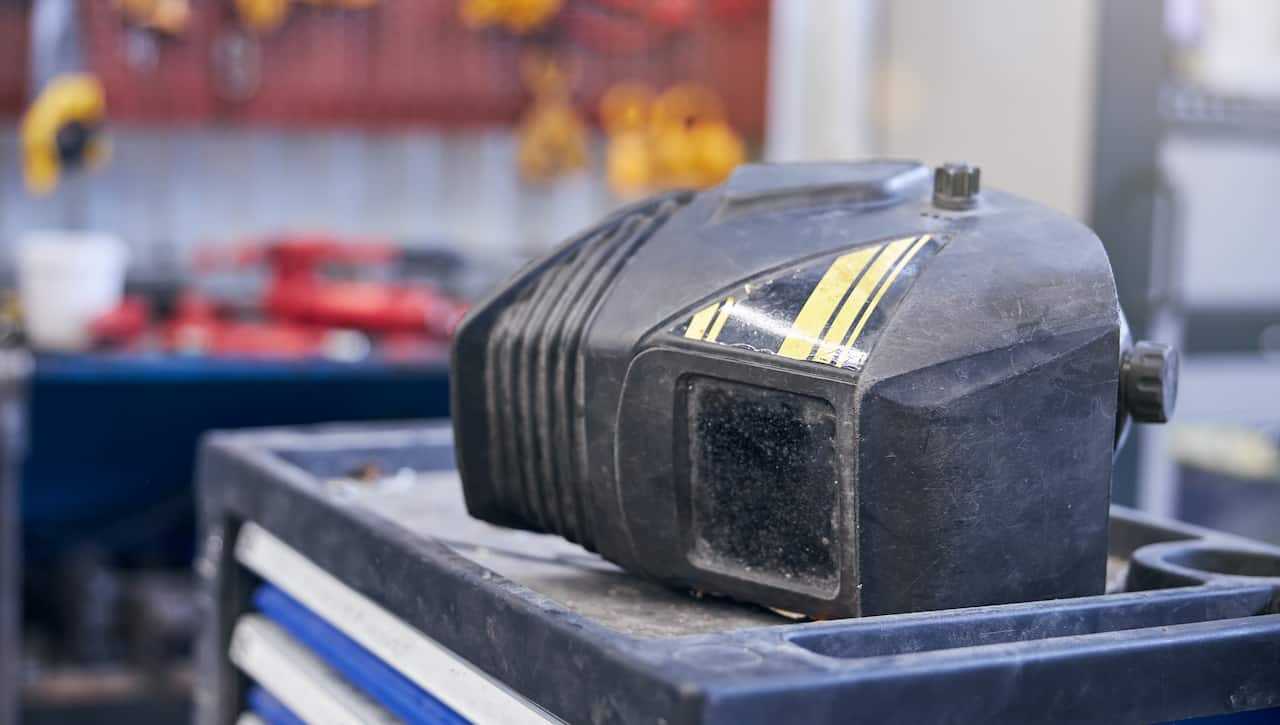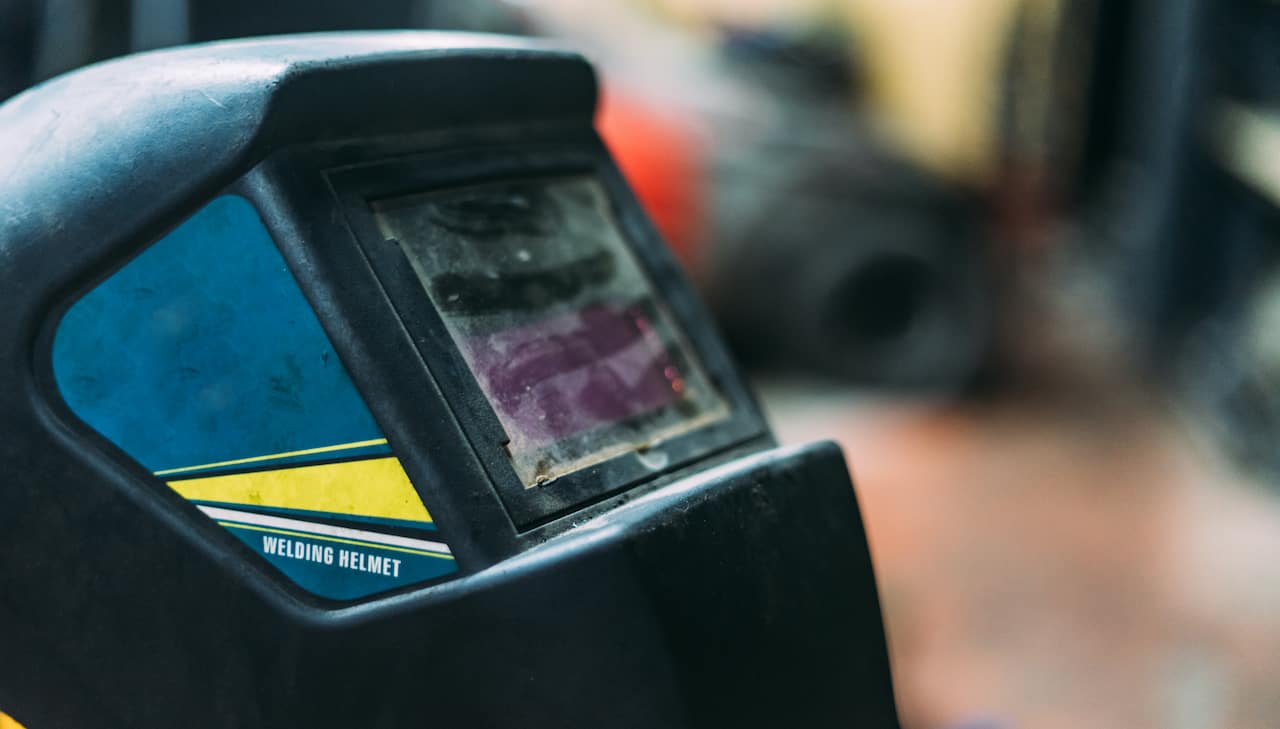If you are a welder, you know how dirty that clear outer lens on your welding helmet gets.
Windex, glass cleaner, and plain old soap and water are the first go-to for cleaning a lens. But after a certain point, the grime and scratches are just too hard to remove.
If you don’t have any spares to hand or just want to save some dollars, there are several tricks to cleaning the lens to extend its life.
I will also show you some easy tips to keep your lens cleaner in the first place, so it won’t need to be cleaned quite as much.
What Causes the Lens to Get Dirty?
No matter what kind of welding helmet you have, the lens can become dirty for several reasons. These include:
- Dust: Let’s admit it… workshops and work yards are not the cleanest of places. Dust and grime easily accumulates and sticks to your helmet.
- Weld Smoke: Smoke that gives off from your weld can leave a smoky film on your lens even after it dissipates.
- Weld Spatter: Weld-spatter happens to the best of us, and those little blobs stick to your outer lens and damage the surface when removing.
- Scratches: You may be careful with your helmet, but over time it’s inevitable that the outer lens will pick up scratches. You don’t normally notice surface scratches, however, deeper scratches may become annoying in your field of view.
3 Ways to Clean Your Lens
Some welders are fine just wiping their welding helmet lens with their hand, a towel, or even their (dirty!) T-shirt, but long-term, this is not a very practical approach.
Such careless cleaning can actually cause more scratches on your lens.
The following are three ways to get the outer clear lens on your helmet clean.
1. Use a Buffing Wheel
A buffing wheel and a dab of light buffing compound will do wonders to clean and restore your welding visor.
Buy a light buffing compound in cake form. Turn on the buffing wheel, add a bit of buffing compound to the wheel as it is spinning, and then place your dirty lens up against the still-spinning wheel.
Move the lens around gently, applying just enough pressure to get a good buffing. You will have buffed off the welding spatter in a couple of minutes and polished out the scratches.
As you use your helmet more, at some point, the scratches will no longer buff out. At that point, it is time to get a new clear protective lens.
2. Use a Rubbing Compound
The second handy trick to cleaning your clear visor is to use a rubbing compound, such as those that car detailers use to put the final polish on a car’s paint.
We recommend using 3M rubbing compound 05973, as it removes scratches, stains, oxidation and surface marks. This compound works well on any polycarbonate surface.
It may seem a bit pricey, but you only need a few drops when cleaning your lens, so it will last you a long time.
This particular product is for the fine grit created by welding dust and soot. If you use a heavier grit compound, it will likely scratch the surface of your lens even more.
Start by dabbing a few drops of the rubbing compound onto your lens. Next, wipe gently with a terry cloth or microfiber cloth. This will quickly remove any surface gunk.
You can dab on a little more once the surface grime is gone, then rub a little harder with a soft cloth, and you will see the smaller scratches come out as well.
Once the compound has dried completely, make sure you wipe off any residue using a soft cloth and small, circular motions. This ensures your lens will not be smudged and bleary.
Cleaning your lens with a rubbing compound will give it a much longer life, and you will not have to purchase as many outer replacement lenses, which can get expensive if you do a lot of welding.
3. Use Polish
The last tip for cleaning your helmet is to use some polish, such as every day Pledge (furniture polish with wax) or Armor All (car polish and wax).
Even if you use glass cleaner first, topping that off with polish is still beneficial, as the polish also helps remove dirt. It also leaves a thin film behind, which will help prevent scratches.
Be sure to wipe off any swirl marks, which will ensure you do not have problems with light reflecting off the lens and making it harder to see while you are welding.
Polish will also help keep your lens from fogging up and smudging.
Finally, the polish fills in fine scratches, thus extending the life of your lens before you have to replace it.
Tips to Keep Your Lens Cleaner
There are also a few handy tips to keep your lens from getting so dirty while you are welding, so you won’t have to take your helmet apart and clean it as often.
Apply a Dab of Wax to the Shield
First, apply a little wax to the outer lens.
This will prevent weld-spatter particles from sticking to the plastic lens as much, and the slippery surface created by the wax application will also make it easier to clean the lens.
Too much, though, and you’ll end up with even more gunk on your face shield.
Use Proper Ventilation
One way to keep stuff from sticking to your welding helmet in the first place is to ensure you have appropriate ventilation in your work area.
You can even set up a fan at low speed to help waft away any lingering smoke and debris.
By using preventative methods, you can avoid some of the buildups that come from working in an enclosed space.
Keep Your Head Out of the Smoke
Be sure to keep your head back from the smoke caused by welding. If you have a clean lens, you will not have to get as close to your weld because you are able to see.
Also, square your body to the weld for stability, and stabilize your arms. This will also keep you from putting your head close to the weld and the smoke that comes off the weld.
Store Your Helmet Properly
Finally, while this seems obvious, another thing that does a lot of damage to helmets is improper storage.
Storing your helmet correctly in a welding bag, rather than just putting it lens-down in any old place in your work area, will keep the lens from getting so scratched.
If your helmet falls off a shelf or workbench, the fact that it is nicely protected in a cloth bag will also help prevent it from getting damaged.
Rounding It Up
If you have tried all of the tricks and tips above and your clear outer lens is still dirty and scratched, it is probably time to replace it.
Related: 9 Top-Rated Welding Helmets Reviewed
Depending on how old and dirty or scratched the lens is, it just might not be worth trying to clean it again.
The purpose of the cleaning is to extend the lens life, not keep it pristine forever.
Clear lenses are not expensive and are meant to be replaced often, as they are the first layer of protection between you and a weld.
Always be sure to keep a few extra clear lenses on hand so you won’t have to drop work in the middle of your project and run out to the hardware store to get another one.
Related Articles
How do Auto-Darkening Welding Helmets Work
Testing Your Auto-dark Welding Helmet

